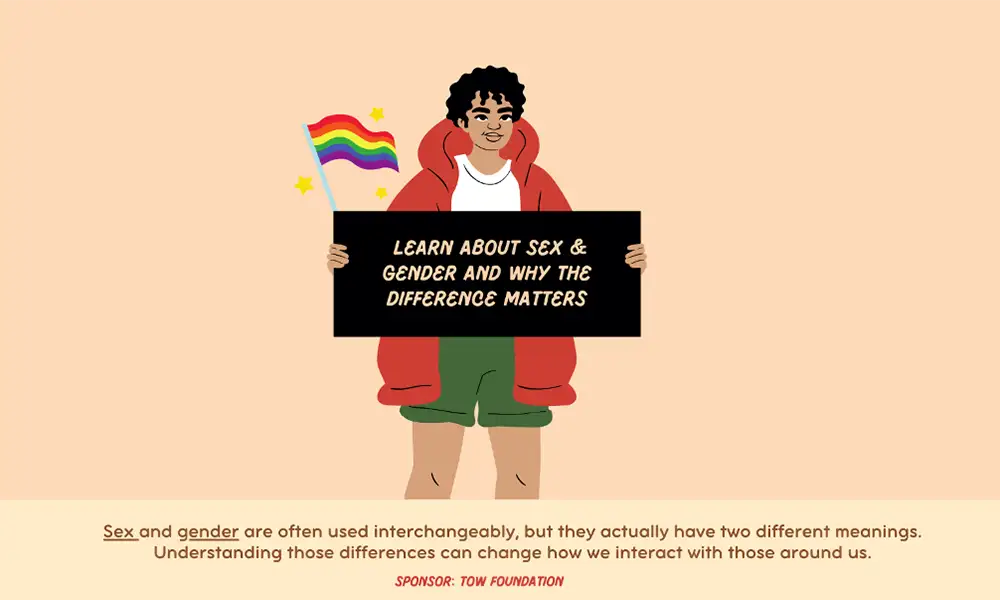Gender: How you feel and express yourself to others
Male, female, nonbinary, other
Every one of us has a gender identity, whether or not we’ve spent a lot of time thinking about it. It’s your personal, individual sense of who you are, and how you relate — or don’t — to concepts like “male” and “female.”
Keep in mind: Your gender identity does not necessarily equal the pronouns you use. For example, you may use she/her pronouns even if you don’t identify as a woman.
Your gender identity may be:
- Male: You identify as a man. You might use the pronouns he, him, his , or other pronouns of your choosing.
- Female: You identify as a woman. You might use the pronouns she, her, hers, or other pronouns of your choosing.
- Nonbinary: You identify as something other than male or female. Rather, you may consider yourself genderqueer, gender-nonconforming, pangender or something else. You may use the gender-neutral pronouns they, them, their, or other pronouns of your choosing.
- Other: Your gender identity is not reflected in any of the categories above. For example, you may consider yourself agender, genderfluid or something else. As always, you may use any pronouns of your choosing.
Your gender identity is determined by:
- How you feel: Do you know and think of yourself as female, male, both or neither, or something else? You’re the expert. (Remember: Many people’s gender identity does not match the sex they were born with. That is okay!)
- How you choose to express those feelings: This or may not include your decisions about your appearance, like how you style your hair or the clothing you wear; how you behave; your preferred social roles; and any other self-expression.
Gender identity is a personal experience, so it looks and feels different to everyone.
Wondering how to respectfully ask a person’s gender identity?
Try asking about pronouns, starting with your own: “My pronouns are she/her. What about you?”
A person’s feelings towards their gender expression can begin as early as 2 or 3 years of age.2 (Some research has even found that infants may be aware of their own gender identity by 2 years of age.3) But for many people, this is a lifelong journey. All of these processes are equally valid.
Like other aspects of identity, your gender identity can change and evolve as you age. It can also be shaped by the culture, society and social norms that surround you — which may also change over time!


